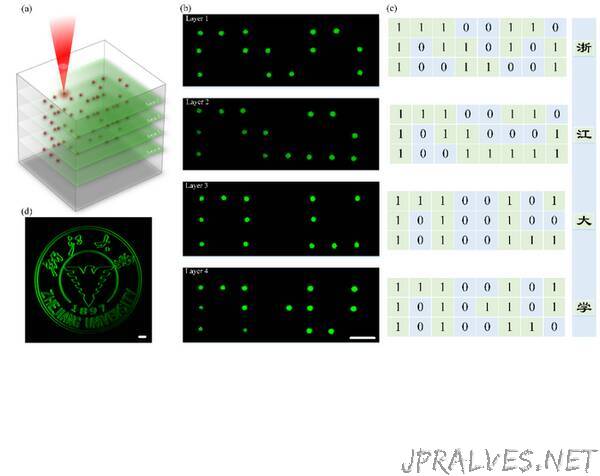
“A new publication from Opto-Electronic Advances, DOI 10.29026/oea.2023.220008, discusses perpetual optical data storage in glass with ultra-high stability and tailored photoluminescence.
In the development history of human society, data storage plays an indispensable and pivotal role and has significantly boosted spacious domains from social science to industrial production. With the advent of the Internet of Things and artificial intelligence, the total amount of information has doubled biennially, and it will reach 175 ZB (1 ZB = 1012 GB) by 2025 according to the valuation by International Data Corporation. However, accounting for 80% of the total stored data generated by the government, data disaster recovery centers, and archives are not frequently accessed but still need to be available over long periods in a reliable and low-cost way. However, the existing storage technologies (semiconductor or magnetic-based storage) cannot cope with long-term storage of large amounts of cold data due to the problems such as huge energy consumption, limited lifetime, and low storage density. According to the report by the International Data Center Service provider, the energy consumption of modern data centers will soon exceed 8% of the total global power generation. In order to reduce energy consumption such as heat dissipation during data storage, Facebook established a European Data Center in Lulea, Sweden to use polar cold air for cooling in 2013. In 2018, Microsoft built the first subsea data center in the Orkney Islands. It is conceivable that if the current technology continues to be used, the energy consumption caused by big data storage in the future will inevitably cause an unbearable energy supply burden, and even trigger a global energy and climate crisis. Therefore, it is urgent to develop a new “cold” data storage technology with low energy consumption, long lifetime, and high density.
Optical data storage technique provides a highly fascinating alternative to conventional storage techniques (semiconductor or magnetic-based storage) with lower energy consumption, larger capacity, higher efficiency, and longer lifetime, which is regarded as one of the most ideal data storage technologies to cope with massive cold data. The authors of this article propose an ultra-long-term and high writing speed optical data storage technology enabled by single ultrafast laser pulse induced reduction of Eu3+ ions and tailoring of optical properties inside the Eu-doped aluminosilicate glasses. The lifetime of stored information is determined to be as long as twenty million years. The induced local modifications in the glass can stand against the temperature of up to 970 K and intense ultraviolet light irradiation with a power density of 100 kW/cm2. Furthermore, the active ions of Eu2+ exhibit strong and broadband emission with the full width at half maximum reaching 190 nm, and the photoluminescence is flexibly tunable in the whole visible region by regulating the alkaline earth metal ions in the glass. The developed technology and materials will be of great significance in photonic applications such as long-term optical data storage.
Article reference:
Wang Z, Zhang B, Tan DZ, Qiu JR. Ostensibly perpetual optical data storage in glass with ultra-high stability and tailored photoluminescence. Opto-Electron Adv 6, 220008 (2023). doi: 10.29026/oea.2023.220008 “
